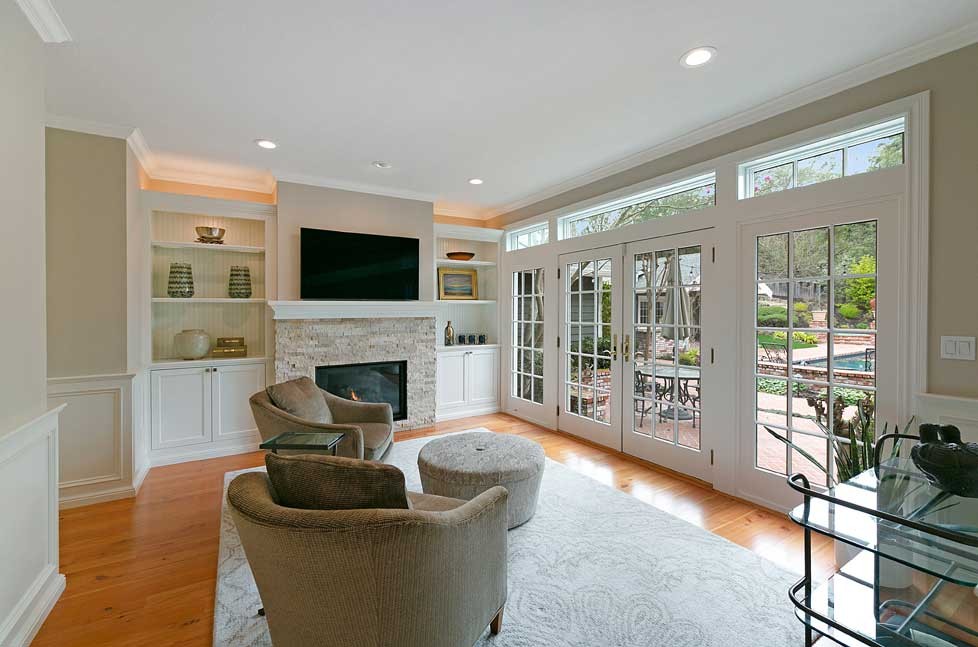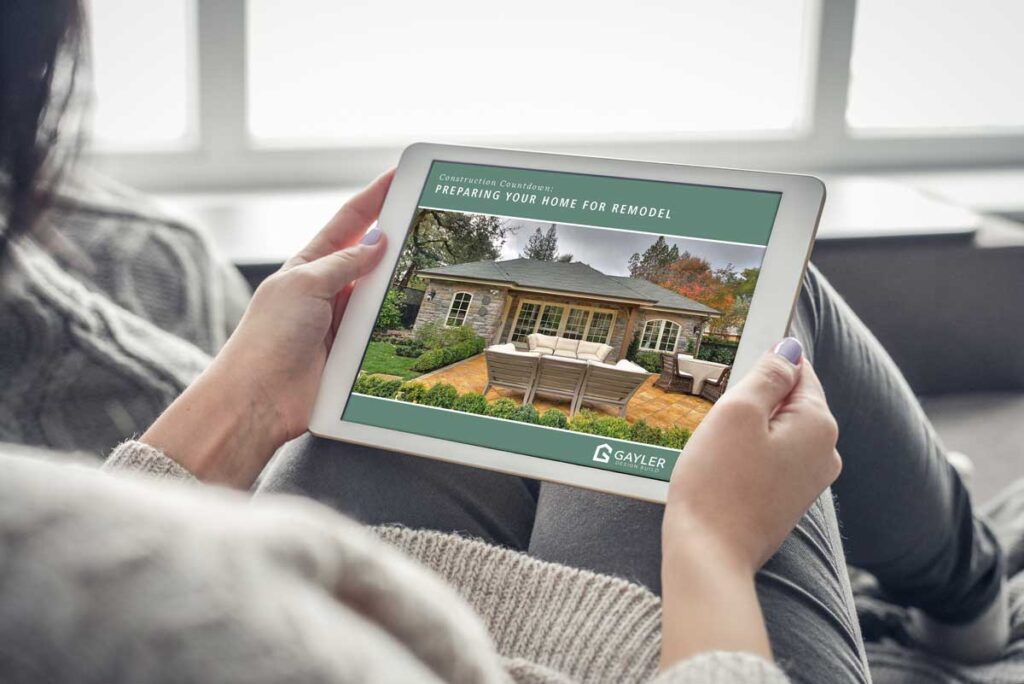Natural light can raise the aesthetics and functionality of any living space, so when you’re planning a new room addition or planning a renovation, consider how incorporating more natural light can transform your home and your enjoyment of living in it. In this post, we’ll look at practical ideas and design choices surrounding how to maximize natural light, and offer expert advice to creating a bright, inviting and energy-efficient home addition.
Be Wise About Your Window Selections
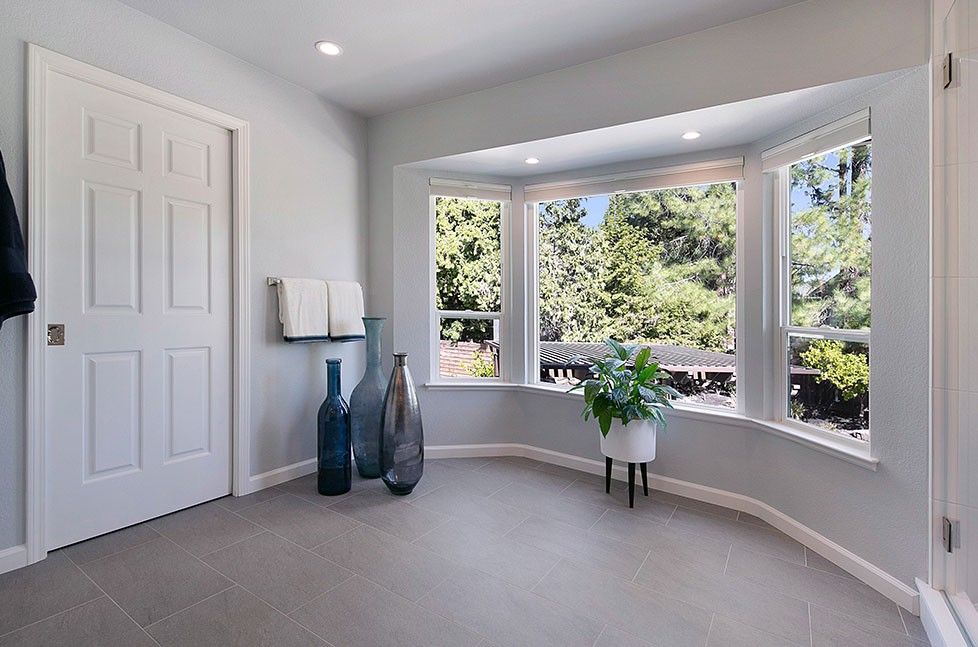
Selecting the right windows for your home remodeling project can greatly impact the aesthetics, comfort and energy-efficiency of your new addition. To make wise window selections, you’ll want to consider various factors, including window types, orientation and their respective benefits.
Picture Windows
Large, fixed picture windows offer unobstructed panoramic views of the outdoors and ample natural light. They are ideal for scenic views and can make a room feel more spacious by creating a seamless connection between your interior and the outside world.
Corner Windows
Corner windows are installed at the corner of two intersecting walls and bring a unique architectural element to your home while allowing light to enter from two different directions. This creates a dynamic play of light and shadows throughout the day. Note that corner windows may require specialized installation to maintain the addition’s structural integrity.
Transom Windows
Transom windows are typically installed above other windows or doors and serve to increase the flow of natural light into a room while adding a touch of elegance and charm to your home’s design and preserving privacy. Options ranging from arched to rectangular transoms enable you to customize the look you love.
Clerestory Windows
Clerestory windows are high set, typically positioned near the ceiling, just below the roofline, and offer privacy while maximizing natural light. They are good choices for room additions with high ceilings, such as living rooms or kitchens, and can provide soft, indirect light throughout the day, thus reducing the need for artificial lighting.
Window Direction
Consider the direction of your windows for maximizing sunlight exposure and improving energy efficiency. South-facing windows receive the most direct sunlight and are ideal for spaces where you design warmth and natural light. East-facing windows capture the morning sun and are perfect for breakfast nooks or bedrooms. West-facing windows capture the afternoon sun, offering a warm glow in evenings. And North-facing windows receive the least direct sunlight and are well-suited for rooms where excessive heat and glare are a concern.
Incorporate Glass into your Doors
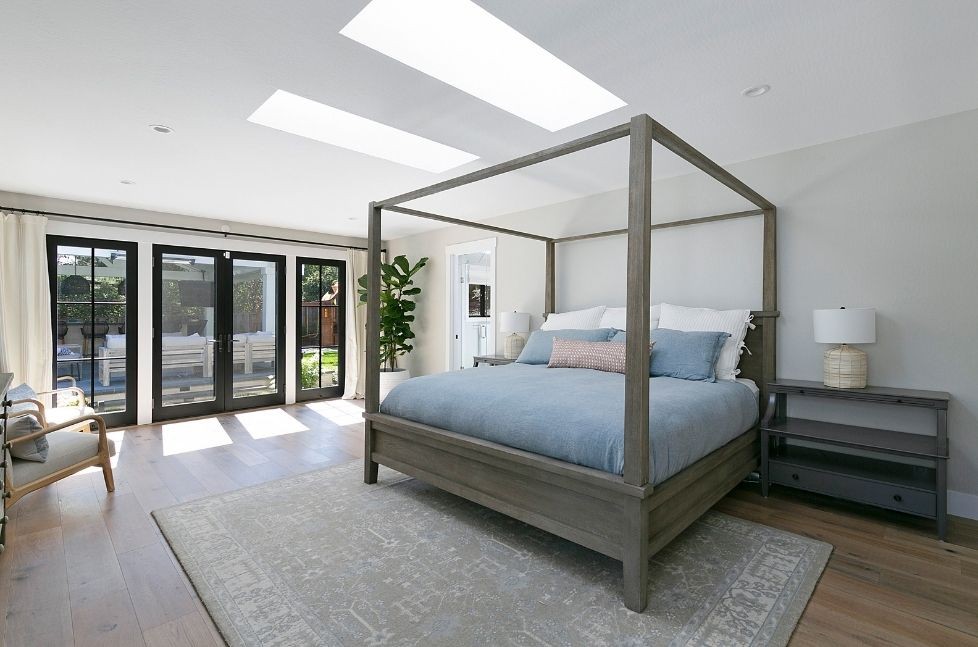
Incorporating glass into your doors not only brightens your home, it is an effective way to increase natural light while maintaining style and functionality, with different doors styles providing various opportunities to infuse glass.
Bifold Doors
Bifold doors are a contemporary choice for homeowners looking to maximize the amount of glass in the door. They consist of multiple panels that can fold and stack against each other when opened, creating a wide, unobstructed opening. Each panel can be fitted with glass, allowing for substantial light and a seamless transition between indoors and outdoors.
Patio Doors
Patio doors are a classic choice to connect indoor and outdoor living spaces with unobstructed views and easy access between areas. Typically, they have large glass panels and come in various configurations, including sliding and hinged options. Choosing energy-efficient glass can help maintain a comfortable indoor temperature.
Sliding Doors
Sliding doors can help maximize light and space utilization in your addition. They consist of two or more glass panels that slide horizontally along a track and offer a sleek and modern appearance and a space-saving option, as they don’t swing in or out.
French Doors
French doors are renowned for their timeless elegance. Consisting of two hinged panels that swing open from the center, and either full-length glass panels or smaller glass inserts within each panel, French doors are ideal for interior or exterior applications.
Other Options
In addition to the aforementioned choices, other door styles can increase natural light into your home. For example, entry doors with glass inserts or sidelights can introduce light without sacrificing security, and for interior spaces, pocket doors with glass panels that slide into the wall can create flexible room configurations and light flow.
Consider a Window Wall
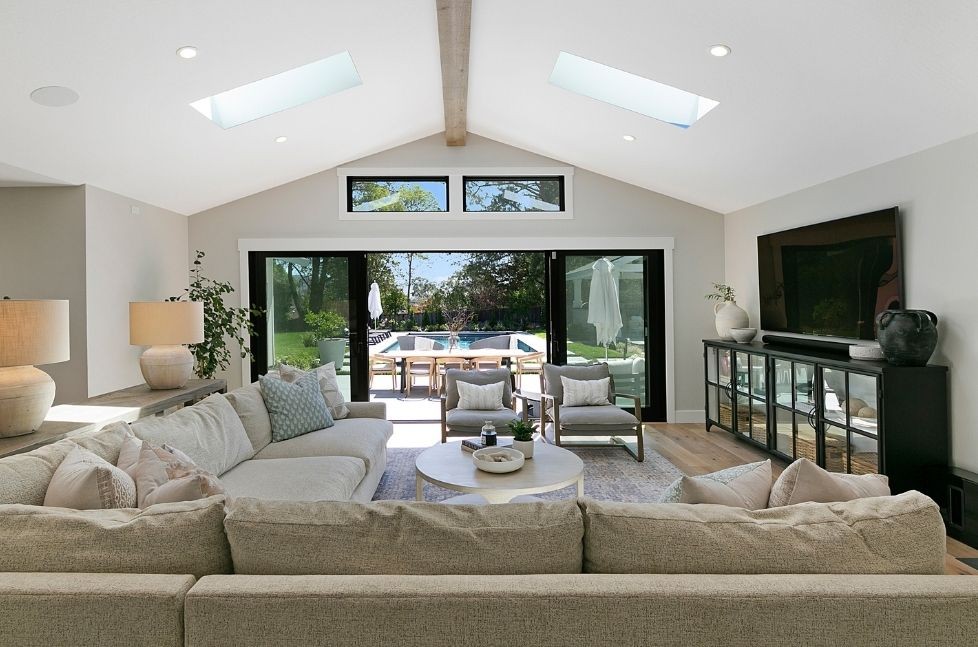
One the primary benefits of a window wall is the substantial increase in natural light it brings into your home. As an expanse of windows covering a significant portion of a wall, it allows an abundance of light to flood the interior while adding a visually striking design element to your home.
Some of the considerations for adding a window wall include:
Orientation
South-facing windows provide the most direct sunlight and are most suitable for areas where you want to harness heat and light. However, this may require shading options to prevent overheating. North-facing windows receive even, indirect light for spaces where you want a consistent, soft glow throughout the day.
Energy Efficiency
To maintain comfortable indoor temperature and minimize energy costs, choose energy-efficient glass and frames. Low-E glass helps prevent heat transfer, keeping your home cool in summer and warm in winter. Proper insulation and weather sealing are also essential.
Structural Considerations
Installing a window wall may require modifications to the home’s existing structure. You may need support systems to accommodate the window’s added weight and size.
Privacy and Glare
While a window wall offers an abundance of light, you need to consider privacy and glare control. Options like tinted glass or window treatments can address these concerns without sacrificing the benefits of natural light.
Types of Window Walls
The types of window walls include:
- Fixed window wall: large, fixed glass panes that do not open; often found in modern and minimalist design
- Sliding window wall: multiple glass panels that slide horizontally or vertically to open or close the space; offering flexibility in controlling airflow and connecting indoor and outdoor areas
- Folding or bifold window wall: hinged panels that fold and stack against each other when opened to create a wide, unobstructed view and access
- Curtain wall: a non-structural, lightweight exterior wall system using large glass panels and aluminum or steel framing; often used in commercial buildings, but can be adapted for home use for a modern, industrial look
Replace Internal Walls with Glass Panels
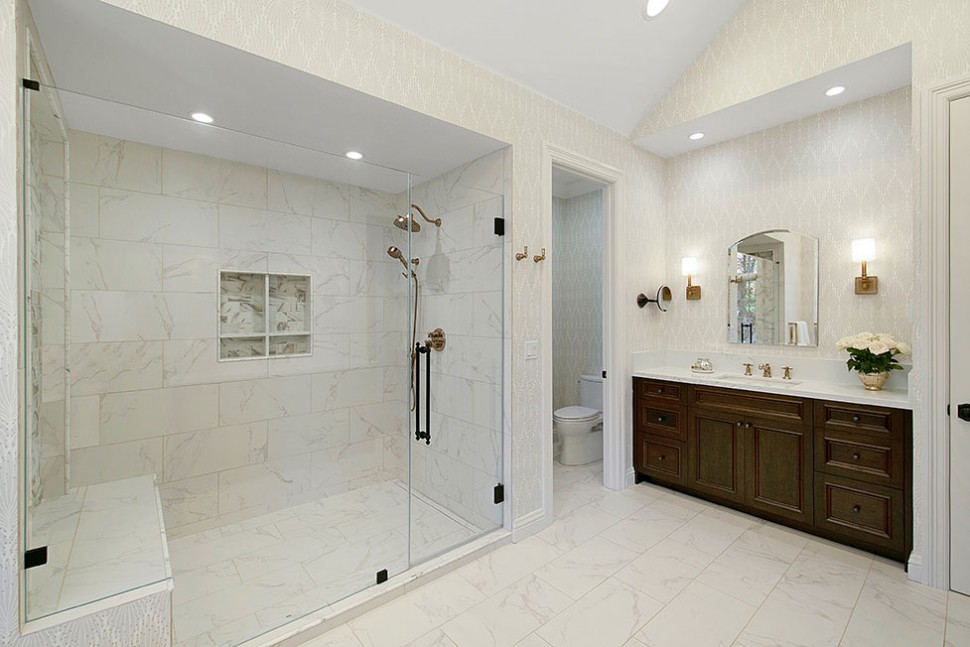
Replacing inner walls with glass panels can create a stunning, light-filled environment, but it can also present challenges related to privacy, maintenance and sound insulation.
Advantages
Enhance Natural Light
Glass panels allow an abundant flow of natural light, creating a bright and inviting atmosphere, and significantly reducing the need for artificial lighting during the day, thus saving on energy costs.
Visual Connectivity
Glass walls establish visual connections between rooms, providing an open and airy feel. This can be advantageous for smaller spaces to make them appear larger and more welcoming.
Aesthetic Appeal
Glass walls lend a modern, contemporary aesthetic and can be designed in various styles including clear, frosted and textured glass, depending on your privacy and design preferences.
Potential Drawbacks
Privacy
Glass walls can compromise privacy in the home. Depending on their location, you may need to implement solutions such as curtains, blinds or frosted glass to maintain privacy.
Sound Transmission
Glass is not an effective sound insulator, which means noise can easily travel from one room to another. You may need to consider soundproofing solutions.
Maintenance
Glass requires regular cleaning to maintain its transparency. Fingerprints, smudges and dust are more apparent on glass compared to painted walls.
Cost
Glass panels can be more expensive than traditional wall materials, including drywall or plaster. Additionally, modifications to the existing structure may be required.
Structural Considerations
Replacing load-bearing walls with glass panels, or making structural changes, require careful planning and professional expertise to ensure the safety and integrity of your property.
Light Control
In areas where direct sunlight may be excessive, measures such as UV protection, window treatments or strategic placement can help manage light levels.
Utilize Skylights or Suntubes

Skylight and suntubes offer different methods for introducing natural light into your addition. They serve a similar purpose, but differ in their installation and the amount of light provided.
Skylights
A skylight is a fixed window installed in the roof or ceiling, allowing direct sunlight to enter the room from above. They come in various shapes and sizes including flat, domed or vented designs.
Skylight Benefits
- Abundant light flooding a room to make it feel brighter and more inviting
- Aesthetic design element, adding architectural interest and a focal point with scenic views of the sky or surrounding landscape
- Natural ventilation when opened to cool and refresh interior spaces
- Energy-efficiency, featuring low-E coatings and thermal breaks to reduce heat gain and loss
Suntubes or Tubular Skylights
Suntubes are tubular systems that capture sunlight from the roof and channel it through a highly-reflective tube, then diffusing the light into the room through a diffuser or ceiling fixture.
Suntube Benefits
- Flexible installation; they can be installed in various locations where traditional skylights may not be feasible
- Space efficiency, with a smaller size compared to skylights; good for small or tight spaces, or rooms with limited ceiling or roof space
- Energy efficiency with designs to minimize heat gain and loss, and potential energy-efficient features like integrated LEDs for nighttime lighting
- Daylight control with potions for dimmers or diffusers that let you control the amount of light or the ability to close it off completely
- Reduced heat gain, offering light without the potential for excess heat gain
Paint your Home’s Eaves White
Painting your home’s eaves white is a practical and cost-effective way to increase natural light in and around your home by leveraging the properties of white paint.
The color white is known for its high reflectivity, and when you paint the undersides of the roof overhang—the eaves—they act as reflective surfaces. Striking sunlight is bounced back into the surrounding space to brighten the areas below. This can reduce your electrical energy consumption and create a more inviting and well-lit environment.
Tips for Maximum Light
- Use of high-quality, UV-resistant white paint to ensure the finish remains bright and does not degrade quickly from sunlight exposure.
- Regular maintenance, including cleaning or repainting, to remove accumulated dust, dirt or mildew and aid in maintaining the desired reflection level.
Design Choices to Maximize Light
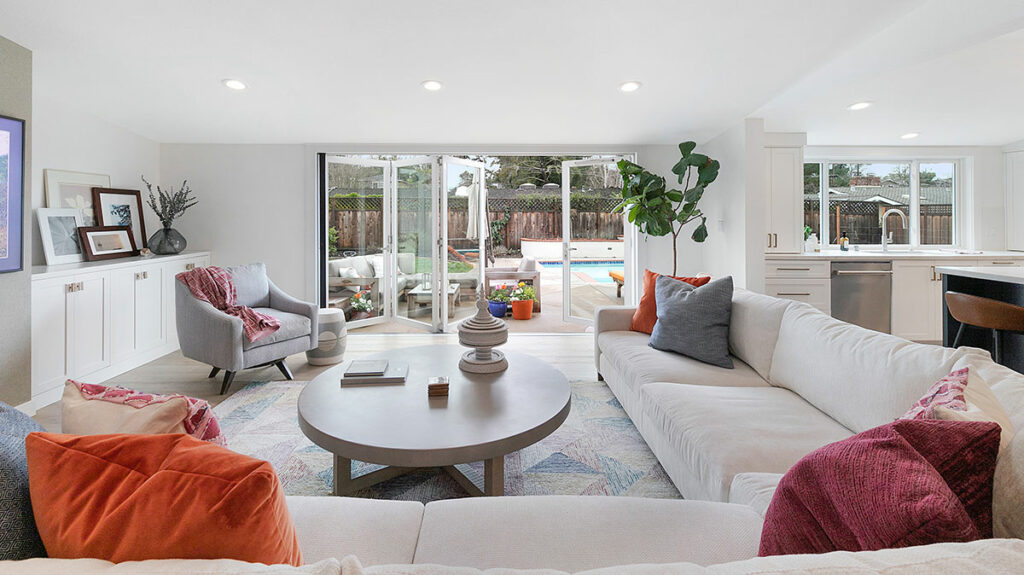
There are other design choices that can help maximize light in your new home addition that can make a significant difference in brightening and enhancing the overall feel and enjoyment of your living spaces.
Lighter Colors for Flooring and Walls
Light colors, such as whites, creams, pale grays and soft pastels reflect more light, creating a visually open and airy atmosphere. They also help bounce natural light around the room, making it feel more spacious and inviting.
Higher Gloss Paint
A higher gloss or sheen level, such as satin or semi-gloss on walls and trim, can enhance the surfaces’ reflective properties. These finishes are easier to clean and maintain and create a subtle shine to amplify the impact of natural light.
Glass and Highly-Reflective Tiles
Glass elements and highly-reflective tiles can boost light, especially with the use of a glass backsplash in a kitchen or glass mosaic tiles in bathrooms.
Strategic Mirror Placement
Place mirrors across from windows to capture and reflect natural light deep into rooms and create a feeling of expansiveness.
Open Layouts
Removing or minimizing interior walls can create an open floor plan that can promote the flow of natural light throughout your home. Light can travel freely from room to room, reducing shadows and creating a more connected, well-illuminated environment.
Light Window Treatments
Use lighter fabrics and sheer materials to provide privacy while still allowing ample natural light to filter through. Curtains or blinds can be fully drawn to maximize light when desired.
Skylights and Suntubes
As previously mentioned, skylights and suntubes can be advantageous in areas receiving minimal sunlight from conventional windows.
Decluttering and Minimalist Design
Reduce clutter and opt for minimalism to create a sense of openness and spaciousness. Clutter creates shadows and can obstruct light flow. A cleaner and more streamlined design allows light to move more freely.
Maximizing natural light in your home can enhance the aesthetic appeal and contribute to your well-being and energy efficiency. Your home is a reflection of your lifestyle and personality, and with abundant natural light, it can truly shine.
Add Natural Light to Your Contra Costa County Home Addition with Gayler Design Build
At Gayler Design Build, we understand the significance of natural light in transforming the ambiance and functionality of your home addition in the Danville, CA and Contra Costa County region. Our expertise in design and construction equips us to help homeowners maximize natural light effectively.
Our design professionals work closely with you to understand your vision and needs for your home addition, and explore its potential design to optimize natural light with carefully-placed windows, skylights and architectural features.
We’ll guide you in choosing the right windows, considering factors like size, orientation and energy efficiency, and can even look at skylight integrations and interior layouts to maximize natural light.
Our goal is to create a home addition that exceeds your expectations in terms of design and natural light optimization. We’re dedicated to bringing your vision to light through our proven expertise, comprehensive services, highly-customizable design, quality craftsmanship, open and honest communication, and focus on energy-efficiency.
With deep roots in the San Ramon Valley, we have an intimate understanding of the local area, its unique characteristics and the specific requirements for home additions. Our longstanding presence in the community, and our 23-year consistent track record of completing projects on time and on budget make Gayler the premier choice for home additions and remodeling.
If you’d like to explore a light-filled home addition, contact Gayler at 925-820-0185. In the meanwhile, take a look at our design portfolio and connect with us through our newsletter to get inspired.

